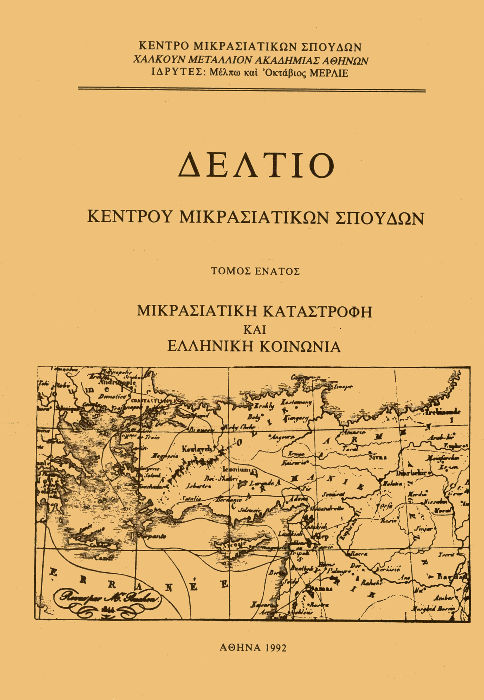Η ποντιακή ταυτότητα της τρίτης γενιάς
Περίληψη
In the 1920s more than 230,000 Pontic Greeks took refuge in Greece from
Asia Minor and the Soviet Union. The overwhelming majority of them were
from Asia Minor. Migratory waves from the Soviet Union to Greece continued
despite long interruptions, reaching peaks in 1939 and again from 1988 until
now. The collective identity of Pontic Greeks in Greece is not a national or
ethnic identity, because the group is part of a larger nation, the Greek nation,
and it is not regional, because the geographical area of reference has been lost.
The group migrated en masse from their place of origin and are not able to
return.
The methodology used in researching the causes and conditions of the
formation and subsequent evolution of Pontic identity in Greece from the
1920s included 92 face-to-face interviews conducted in 1989 with members of
different generations of Pontic Greeks. The biographical approach was used in
these interviews, which provided most of the material from which the conclusions
were drawn. Other approaches were also employed, such as participant
observation during the period 1986-1992, in depth interviews with government
officials on the conditions of urban and rural resettlement of first generation
Pontic refugees, and information supplied by Pontic organizations in Athens.
The collective identity of Pontic Greeks in Greece expresses a socio-psychological
feeling of identification which springs not only from the common past,
but also from the particular manner of integration and the kind of cultural,
economic and ideological relationship of the group with the larger Greek
group. Identity is not only cultural identity. The group by means of its activity
and its relationship with the social environment defines identity and its social
boundaries. Pontic identity today is seen by the third generation as the right to
cultural and historical uniqueness. This differentation does not imply separatism,
but on the contrary it is a cohesive factor in the evolution of the common
Greek national identity. The overall national identity encompasses Pontic
identity. This leads to the formation of a nationalist, rather than a regionalist
ideology.
Λεπτομέρειες άρθρου
- Πώς να δημιουργήσετε Αναφορές
-
Βεργέτη Μ. (1992). Η ποντιακή ταυτότητα της τρίτης γενιάς. Δελτίο Κέντρου Μικρασιατικών Σπουδών, 9, 79–96. https://doi.org/10.12681/deltiokms.131
- Τεύχος
- Τόμ. 9 (1992)
- Ενότητα
- Άρθρα

Αυτή η εργασία είναι αδειοδοτημένη υπό το CC Αναφορά Δημιουργού – Μη Εμπορική Χρήση – Παρόμοια Διανομή 4.0.
Οι συγγραφείς των άρθρων που δημοσιεύονται στο Δελτίο διατηρούν τα δικαιώματα πνευματικής ιδιοκτησίας επί των άρθρων τους, δίνοντας στο περιοδικό το δικαίωμα της πρώτης δημοσίευσης. Άρθρα που δημοσιεύονται στο Δελτίο διατίθενται με άδεια Creative Commons 4.0 και σύμφωνα με την άδεια μπορούν να χρησιμοποιούνται ελεύθερα, με αναφορά στο/στη συγγραφέα και στην πρώτη δημοσίευση για μη κερδοσκοπικούς σκοπούς και με δικαίωμα τροποποίησης μόνον με παρόμοια διανομή (αν αναμείξετε, τροποποιήσετε, ή δημιουργήσετε πάνω στο υλικό, πρέπει να διανείμετε τις δικές σας συνεισφορές υπό την ίδια άδεια όπως και το πρωτότυπο).


